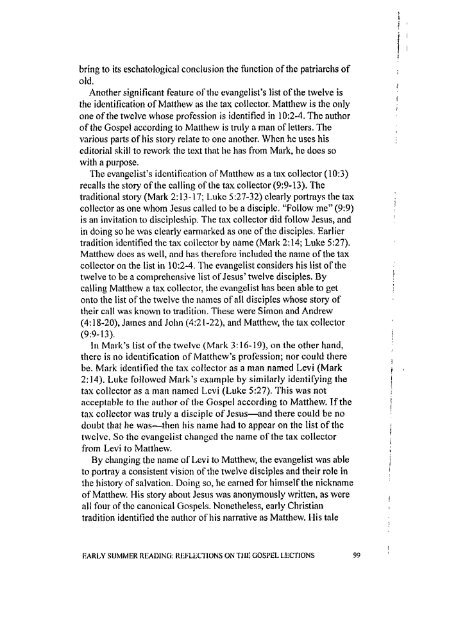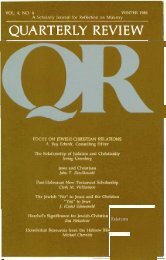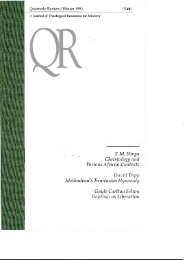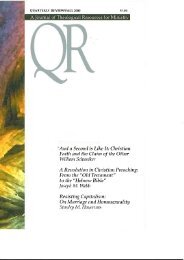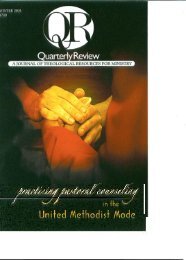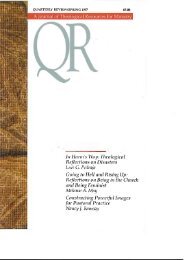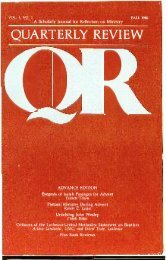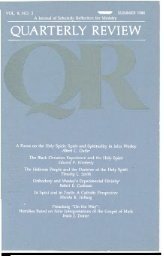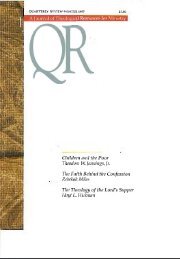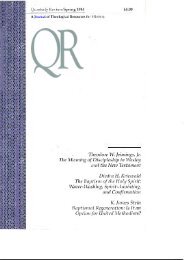Spring 1999 - Quarterly Review
Spring 1999 - Quarterly Review
Spring 1999 - Quarterly Review
Create successful ePaper yourself
Turn your PDF publications into a flip-book with our unique Google optimized e-Paper software.
ing to its eschatological conclusion the function of the patriarchs ofold.Another significant feature of the evangelist's list of the twelve isthe identification of Matthew as the tax collector. Matthew is the onlyone of the twelve whose profession is identified in 10:2-4. The authorof the Gospel according to Matthew is truly a man of letters. Thevarious parts of his story relate to one another. When he uses hiseditorial skill to rework the text that he has from Mark, he does sowith a purpose.The evangelist's identification of Matthew as a tax collector (10:3)recalls the story of the calling of the tax collector (9:9-13). Thetraditional story (Mark 2:13-17; Luke 5:27-32) clearly portrays the taxcollector as one whom Jesus called to be a disciple. "Follow me" (9:9)is an invitation to discipleship. The tax collector did follow Jesus, andin doing so he was clearly earmarked as one of the disciples. Earliertradition identified the tax collector by name (Mark 2:14; Luke 5:27).Matthew does as well, and has therefore included the name of the taxcollector on the list in 10:2-4. The evangelist considers his list of thetwelve to be a comprehensive list of Jesus' twelve disciples. Bycalling Matthew a tax collector, the evangelist has been able to getonto the list of the twelve the names of all disciples whose story oftheir call was known to tradition. These were Simon and Andrew(4:18-20), James and John (4:21-22), and Matthew, the tax collector(9:9-13).In Mark's list of the twelve (Mark 3:16-19), on the other hand,there is no identification of Matthew's profession; nor could therebe. Mark identified the tax collector as a man named Levi (Mark2:14). Luke followed Mark's example by similarly identifying thetax collector as a man named Levi (Luke 5:27). This was notacceptable to the author of the Gospel according to Matthew. If thetax collector was truly a disciple of Jesus—and there could be nodoubt that he was—then his name had to appear on the list of thetwelve. So the evangelist changed the name of the tax collectorfrom Levi to Matthew.By changing the name of Levi to Matthew, the evangelist was ableto portray a consistent vision of the twelve disciples and their role inthe history of salvation. Doing so, he earned for himself the nicknameof Matthew. His story about Jesus was anonymously written, as wereall four of the canonical Gospels. Nonetheless, early Christiantradition identified the author of his narrative as Matthew. His taleEARLY SUMMER READING: REFLECTIONS ON THE GOSPEL LECTIONS 99


